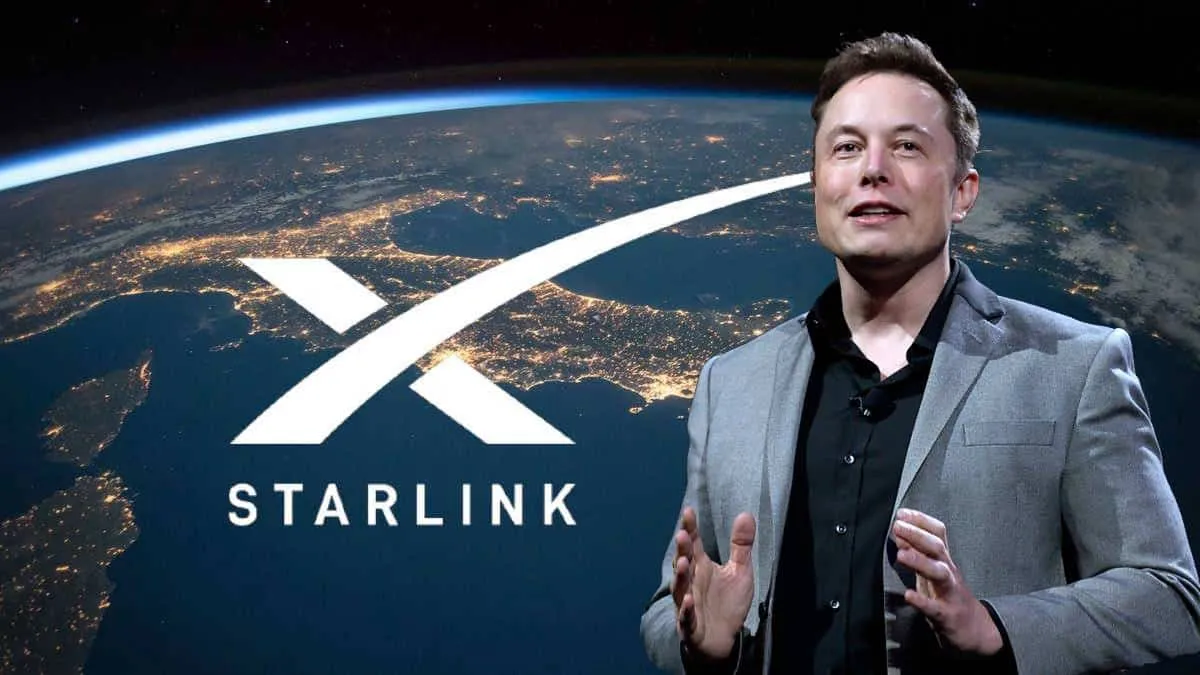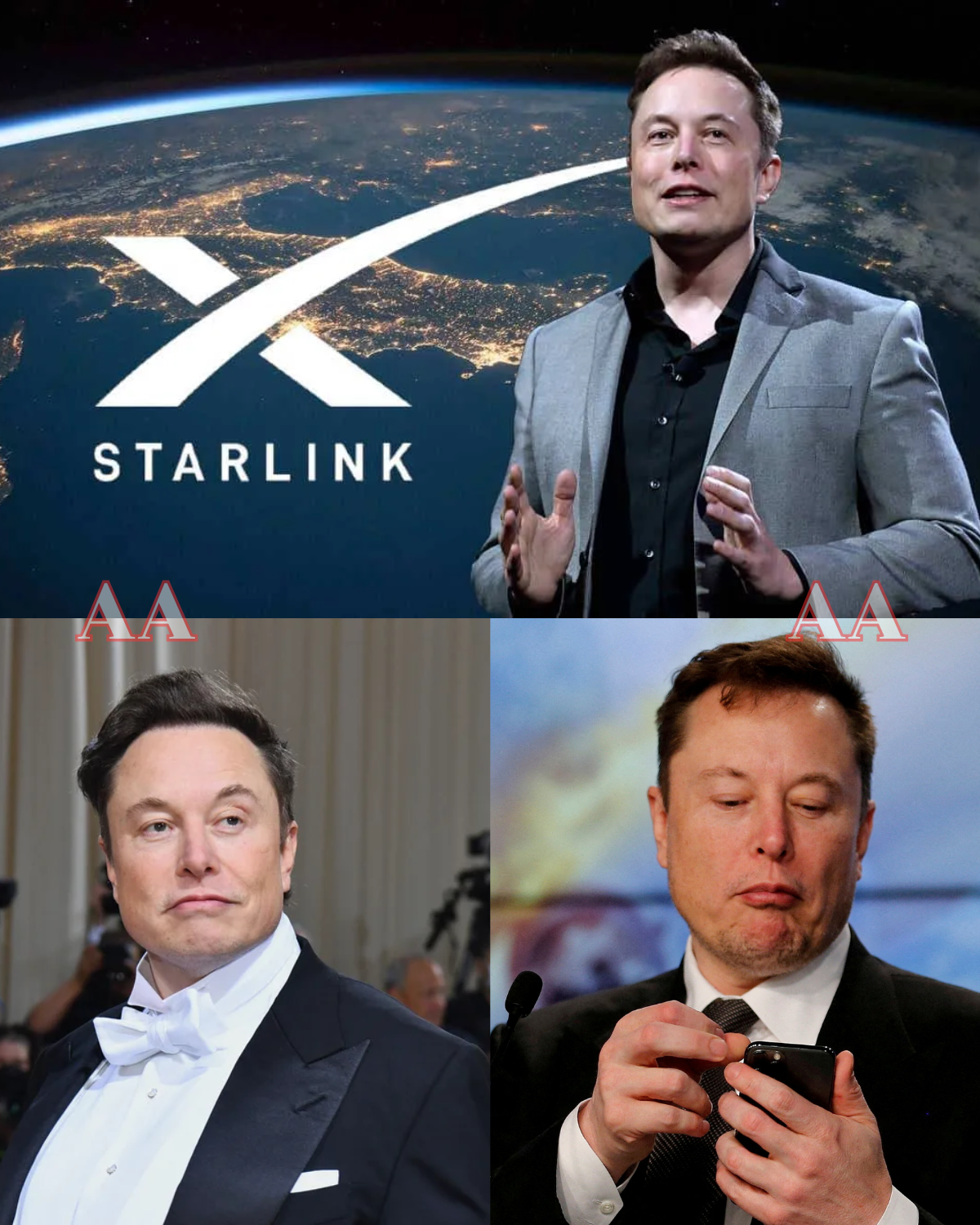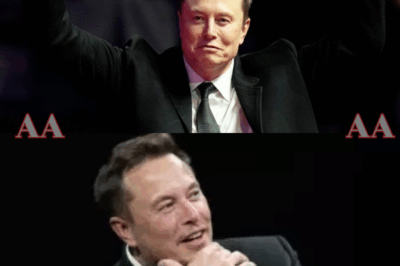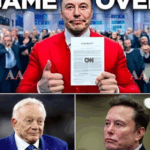Elon Musk, the billionaire entrepreneur and founder of SpaceX, Tesla, and Starlink, has once again captivated global attention with his latest announcement. SpaceX and Starlink have unveiled plans to revolutionize global connectivity by introducing groundbreaking technology that could directly connect mobile phones to broadband internet via satellites. This ambitious plan, backed by a $17 billion investment in spectrum acquisition and advanced satellite technology, has the potential to disrupt traditional telecommunications, reshape the future of the internet, and even impact global energy infrastructure.
The revelation comes as SpaceX continues its rapid deployment of Starlink satellites equipped with Direct-to-Cell (DTC) technology, which aims to bypass traditional cellular networks and provide seamless broadband connectivity to mobile devices anywhere on Earth. While the technology is currently being tested for basic messaging services, Musk’s vision extends far beyond texting, with plans to enable high-speed video streaming and global internet access from even the most remote locations.
But what exactly is SpaceX building, and how could this innovation change the world?
A $17 Billion Bet on Spectrum and the Future of Connectivity
The foundation of SpaceX’s ambitious plan lies in its acquisition of $17 billion worth of spectrum rights, a critical resource for wireless communication. Spectrum refers to the range of electromagnetic frequencies used to transmit data, and owning this resource allows SpaceX to operate its satellites and deliver internet services without relying on traditional telecom carriers.
This move positions SpaceX as a major player in the telecommunications industry, effectively bypassing regional mobile network operators and enabling direct communication between satellites and devices. By controlling its own spectrum, SpaceX can deliver internet services globally, including in areas where traditional infrastructure is unavailable or unreliable.
The acquisition of spectrum rights is a bold step, but it aligns with Musk’s long-standing vision of creating a global internet network that is independent of traditional telecom providers. The implications are enormous: rural and underserved communities could gain access to reliable internet, disaster-stricken areas could stay connected, and even travelers in remote regions could enjoy uninterrupted connectivity.
Direct-to-Cell Technology: How It Works
At the heart of SpaceX’s plan is its Direct-to-Cell (DTC) technology, which allows Starlink satellites to communicate directly with mobile devices. This technology eliminates the need for cell towers and other terrestrial infrastructure, making it possible to provide internet services anywhere on Earth.
DTC technology relies on advanced satellite hardware and software, including newly developed chipsets that enable mobile phones to connect to satellites as easily as they connect to traditional cell towers. The satellites themselves are equipped with powerful transceivers capable of handling large amounts of data, ensuring that users can enjoy high-speed internet without interruptions.
While the technology is still in its early stages, SpaceX has already begun testing DTC capabilities for basic messaging services such as SMS and MMS. These tests are being conducted in partnership with T-Mobile, one of the largest telecom providers in the United States. The results have been promising, paving the way for more advanced applications like video streaming and real-time communication.
Musk has stated that the technology could be ready for widespread deployment within two years, with plans to expand its capabilities to include voice calls, video streaming, and other high-bandwidth applications.
Global Video Streaming: A Game-Changer
One of the most exciting aspects of SpaceX’s plan is its potential to enable global video streaming from anywhere on Earth. Traditional video streaming services rely on terrestrial infrastructure, which can be unreliable or unavailable in remote areas. By connecting directly to satellites, users could stream videos seamlessly, regardless of their location.
This capability could have profound implications for industries such as media, entertainment, and education. Imagine journalists broadcasting live from conflict zones, educators delivering lessons to students in remote villages, or adventurers sharing their experiences from the most isolated corners of the planet.
Moreover, global video streaming could democratize access to information and entertainment, breaking down barriers that have long excluded rural and underserved communities. For Musk, this is not just a technological achievement—it’s a step toward creating a more connected and equitable world.

Disrupting Traditional Telecom Providers
SpaceX’s plan to bypass traditional telecom providers represents a significant disruption to the telecommunications industry. By connecting directly to satellites, SpaceX eliminates the need for cell towers, fiber-optic cables, and other infrastructure that traditional providers rely on.
This could reduce costs for consumers, as SpaceX’s satellite-based network would operate independently of regional carriers and their associated fees. It could also force traditional providers to innovate and improve their services in order to compete with SpaceX’s global network.
However, the disruption is likely to face resistance from established telecom companies, which have invested heavily in terrestrial infrastructure and spectrum rights. Regulatory challenges could also arise, as governments and industry groups grapple with the implications of SpaceX’s global network.
Despite these challenges, Musk’s track record of overcoming obstacles suggests that SpaceX is well-positioned to succeed.
Implications for Global Energy Infrastructure
While the focus of SpaceX’s plan is on connectivity, the technology could also have implications for global energy infrastructure. Satellites equipped with advanced communication capabilities could be used to monitor and manage energy systems, including solar farms, wind turbines, and power grids.
By providing real-time data and communication, SpaceX’s network could improve the efficiency and reliability of renewable energy systems, helping to accelerate the transition to sustainable energy.
Additionally, the ability to connect remote areas to the internet could enable the deployment of renewable energy projects in regions that were previously inaccessible. This could expand access to clean energy and reduce dependence on fossil fuels, aligning with Musk’s broader vision of creating a sustainable future.

Challenges and Risks
While SpaceX’s plan is undeniably ambitious, it is not without challenges and risks. Developing and deploying the necessary technology will require significant investment and innovation, and the timeline for widespread adoption remains uncertain.
Regulatory hurdles could also pose challenges, as governments and industry groups may resist the disruption caused by SpaceX’s global network. Spectrum rights are heavily regulated, and SpaceX will need to navigate complex legal frameworks to operate its satellites.
Additionally, the technology itself is still in its early stages, and unforeseen technical issues could arise during development and deployment. Ensuring the reliability and security of the network will be critical, especially as it becomes a cornerstone of global communication.
Elon Musk’s Vision for the Future
Despite the challenges, Musk’s vision for the future remains clear: a connected world where anyone, anywhere, can access the internet and communicate freely. For Musk, this is not just a business opportunity—it’s a mission to improve the lives of billions of people and drive progress in technology, energy, and society.
SpaceX’s plan to connect mobile phones directly to satellites is a testament to Musk’s ability to think big and pursue ambitious goals. While the technology is still in its infancy, its potential to revolutionize global connectivity, disrupt traditional industries, and accelerate the transition to sustainable energy is undeniable.
As SpaceX continues to deploy Starlink satellites and test DTC technology, the world watches with anticipation. If successful, Musk’s $17 billion plan could change the future of space, the internet, and global energy—and redefine what is possible in the 21st century.
For now, the question remains: What exactly is SpaceX building? The answer may be nothing less than the infrastructure for a new era of global connection and innovation.
News
🚨 BREAKING: Just minutes ago, Elon Musk stunned the sports world by announcing he has officially purchased the Dallas Cowboys for a jaw-dropping $7.5 billion 🏈💰. In a shocking twist, longtime owner Jerry Jones revealed he will be stepping away — and even leaving the United States — after cashing out in what may be the most dramatic move in NFL history. Musk, already the mastermind behind Tesla and SpaceX, now adds “NFL franchise owner” to his empire. Fans are divided: some are hopeful that Musk’s bold vision could rescue the Cowboys from years of inconsistency, while others fear the billionaire’s experimental style could turn “America’s Team” into a risky venture. No matter which side you’re on, one thing is certain: the Cowboys will never be the same again. The future of the NFL just changed in real time — and the world is watching|KF
7 MINUTES AGO: Elon Musk Buys the Dallas Cowboys for $7.5 Billion — Jerry Jones Leaves America The sports world…
💥 “DISNEY CUT HIM. AGAIN. JIMMY KIMMEL’S RESPONSE? A CBS MEGA-DEAL, AN ON-AIR MIC DROP, AND A PROMISE THAT SHOOK THE INDUSTRY TO ITS CORE 💣🎤” The stage went dark. The audience held its breath. Then Jimmy Kimmel, no longer tied down by Disney’s restrictions, delivered a line so sharp it split the late-night world in two. Cameras rolled, jaws dropped, and by the end of his fiery outburst, one truth was clear: this wasn’t the end — it was a revolution. Insiders reveal CBS wasted no time, securing Kimmel in a mega-deal that has already sent rival networks scrambling. Rumors swirl of a “first show” unlike anything TV has ever seen — cryptic, daring, and set to dismantle the old rules of late-night. Executives are panicking, fans are buzzing, and competitors are wondering whose chair will be pulled out next. Jimmy didn’t just survive being cut. He turned rejection into a weapon — and now, the entire industry is bracing for impact. 🔥 The question isn’t whether late-night will change. It’s who will survive the new era Jimmy just ignited|KF
“Disney & ABC can kiss my ass!” That was Jimmy Kimmel’s explosive declaration after being fired — again — from ABC,…
🔥🚀 ELON MUSK SHATTERS ALL RECORDS — Forbes CONFIRMS He’s Now the First Human in History Worth $500 BILLION 💰⚡ From launching rockets into space to reshaping the future of transportation, Elon Musk has never played small. But this time, he’s crossed a line no one thought possible — becoming the first person on Earth to officially reach a staggering $500 billion net worth. 🌍 Fans call it proof of genius. Critics call it proof of greed. Either way, Musk’s meteoric rise is rewriting the rules of money, power, and influence. With Tesla, SpaceX, and xAI all fueling his empire, the question isn’t how high he can go — it’s whether anyone can ever catch up. But behind the headlines lies a bigger debate: Should so much wealth be concentrated in one man’s hands? And what does Musk plan to do with it — save humanity or dominate it? 👉 The story isn’t just about money. It’s about ambition, control, and the thin line between vision and obsession. The world is watching… and the countdown has only just begun|KF|KF
Synopsis Elon Musk’s net worth surged to $500 billion, making him the first person in history to reach this milestone….
💥 “$50 MILLION LAWSUIT SHOCKER — John Roberts Takes Jimmy Kimmel to Court After Explosive On-Air Meltdown” 💥 What started as a seemingly harmless late-night segment has spiraled into one of the biggest media scandals of the year. In front of millions of viewers, Jimmy Kimmel blindsided television veteran John Roberts with a brutal attack — calling out his integrity, his work, and the very system he represents. The audience gasped, the cameras kept rolling, and the fallout has been nothing short of explosive. Now, Roberts is striking back with a massive $50 million lawsuit, accusing Kimmel of defamation and on-air assault that went far beyond comedy. Industry insiders say this case could reshape how late-night television handles interviews, pushing the boundaries between satire and slander. Fans are divided: some call Kimmel’s outburst “necessary truth-telling,” while others brand it reckless and cruel. Roberts, however, has made it clear — he’s not just defending his name, he’s defending the principles of journalism itself. 🔥 The courtroom battle is set to be as dramatic as the clash that started it all — and the world is watching every move|KF
What began as a routine late-night interview quickly spiraled into one of the most shocking confrontations in television history. Jimmy Kimmel went…
End of content
No more pages to load













